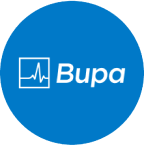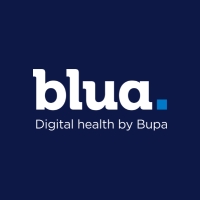Women don't always experience the typical chest pain or heaviness associated with heart attacks in men.
On this page
Key takeaways
Lack of awareness and differences in our bodies and pain tolerance may cause some women to miss the signs of a heart condition.
Being able to recognise the signs of a heart attack in women and getting help right away can lead to better health outcomes.
Heart disease is one of the leading causes of death in Australia and around the world.1,2
While many of the risk factors of heart disease (such as family history, obesity and some lifestyle factors) are the same in men and women, the disease and signs of a heart attack can look different.
Understanding the common signs and symptoms of a heart attack in women may help you to seek treatment earlier, which has the potential to save your life.
Who is at risk of a heart attack?
We often think of coronary heart disease as something that only impacts older men, but it can affect anyone at any age.
There are some things that increase your level of risk, including:3
- a family history of heart disease
- your ethnic background
- advanced age
- having diabetes
- high blood pressure
- high cholesterol
- having preeclampsia or gestational diabetes in pregnancy
- menopause
- obesity
- smoking and excessive alcohol consumption
- a sedentary lifestyle
- poor diet
- poor mental health.
Which risk factors for heart disease only impact women?
Dr Chethan Kasargod, a cardiologist with Advara HeartCare, Australia's largest cardiac care provider, says most risk factors affect everyone; but there are some that only impact women.
"Because we are seeing more women over the age of 35 having children, we are also seeing more instances of preeclampsia and gestational diabetes. These aren't just conditions that disappear when the pregnancy is over. They put women at a higher risk of a heart attack in later life."
Women over the age of 35 having children should be seeing a cardiologist to monitor any changes.
Women also tend to have smaller hearts and smaller heart arteries, says Dr Kasargod.
"This is why we see a higher diagnosis of microvascular disease (MVD) in women, which can be hard to treat." MVD has many of the same risk factors as other types of heart disease, but your risk could also be increased by low oestrogen levels, something that occurs during and after menopause.4
Oestrogen has protective benefits for the heart as it can help to lower bad cholesterol in the body. As women age, oestrogen levels decline dramatically, increasing the risk of heart problems.5
One of the biggest risk factors for women is that heart disease has historically been represented as something that only effects men, meaning women may be less likely to identify symptoms as a heart issue.
"Men are much more likely to present earlier for treatment when they experience heart attack symptoms because many women just don't know that they are at risk of heart problems. It's up to doctors to make sure women know their risk factors and how to address them early on."
Why don’t women seek help for heart problems?
Despite heart disease being the second leading cause of death for women in Australia,1 women are far less likely to recognise heart attack symptoms and seek medical help for them.6
Dr Kasargod says women and men can see pain in different ways. For women, experiences like childbirth and menstrual cycles, which men don't go through, may affect how they perceive and deal with pain.
"Women are also more likely to put themselves last and their family and children first. If they're getting symptoms that could be dismissed as simply being tired, indigestion or something else, they will ignore it for longer than a man."
Heart attack signs and symptoms in women
One of the reasons women tend not to seek treatment for signs of a heart problem early on is that they often don't have the symptoms that we associate with a heart attack. Says Dr Kasargod:
Many women won't get that heaviness in the chest or chest pain that men have with a heart attack. Because their symptoms are different, it's easy to dismiss them as something else and not seek help.
Symptoms of a heart attack in women can include:
- cold sweats
- pain in the neck during activity
- jaw, upper back and left shoulder pain
- unusual fatigue
- shortness of breath
- nausea
- indigestion.
"Many of these symptoms are easy to dismiss, but it's important to address them quickly," says Dr Kasargod. "If you have any odd sensation or discomfort in the chest, or shortness of breath for more than 10 to 15 minutes, go straight to the hospital. Don't wait, even if you have a GP appointment the next day. Doctors in the emergency department don't mind a false alarm, but we do mind missing that golden opportunity to treat a heart attack."
How to support a healthy heart
A healthy, balanced diet and avoiding smoking and drinking are key to a healthy heart. But so is exercise, says Dr Kasargod.
"A sedentary lifestyle can be as big a risk of heart disease as smoking. People should be doing a minimum of movement every day on top of usual activities. Even if it's just a walk, we need to move."
Another simple way we can stay on top of our heart health at home is by tracking our blood pressure.
"Smart watches and at-home blood pressure machines are a good way to know if you have high blood pressure. Taken twice a week, you can see if you're in a healthy range. We're aiming for around 120 over 70 or less. Ongoing high blood pressure can cause structural damage to the heart which we don't want to see."
Finally, for healthy adults over 45, people over 35 with diabetes and First Nations people over the age of 30, getting an annual health check can ensure any issues are caught and treated early.
"Get your bloods done every year, make sure your GP knows your risk factors, such as diabetes or a family history of heart disease, and get a heart health check. That's the best way to stay on top of your heart health."
Resources
The Heart Foundation offers information, tools and support to help you reduce your risk and prevent or manage heart disease. They also have information on women and heart disease that includes risk factors around pregnancy and how to spot early warning signs of heart disease.
You can also find information on the range of heart health checks available, guidelines on monitoring your cholesterol and blood pressure, and healthy living advice.
In this article we use the terms 'men' and 'women' to include both cisgendered men and women, and those who were assigned 'male' or 'female' at birth, but whose gender identity now differs.Advara Heartcare Partnership
Bupa has partnered with Advara HeartCare, Australia's largest group of privately practising cardiologists, to help eligible Bupa members achieve better health outcomes and reduce your health risk from heart disease.

At Bupa, trust is everything
Our health and wellbeing information is regularly reviewed and maintained by a team of healthcare experts, to ensure its relevancy and accuracy. Everyone's health journey is unique and health outcomes vary from person to person.
This content is not a replacement for personalised and specific medical, healthcare, or other professional advice. If you have concerns about your health, see your doctor or other health professional.
1Australian Institute of Health and Welfare. (2024). Deaths in Australia. Australian Government.
2World Health Organization. (2025). Cardiovascular diseases. World Health Organization.
3Heart Foundation. (2025). Are you at risk of heart disease?. Heart Foundation.
4American Heart Association. (2025). Coronary microvascular disease. American Heart Association.
5Ames, H. (2022). What is the link between menopause and cholesterol levels?. Medical News Today.
6Heart Foundation. (2025). Women and heart disease. Heart Foundation.
You might also like...
5 ways women can support healthy ageing
Small changes to your daily life can have a big impact on your health as you age. Discover 5 ways to support women’s healthy ageing.
5 heart healthy recipes
Making small changes to your eating habits can reduce your risk of heart disease. We’ve put together 5 dietitian approved recipes to help you get started.
Heart health check: The 20-minute test that could save your life
Heart disease is a leading cause of death in Australia. Booking in for a heart health check could help you identify your risks and save your life.
Spot the signs: Symptoms of a heart attack in men
Heart disease is a leading cause of death for Aussie men. Make sure you know the signs of a heart attack and find out how you can monitor your heart health.





